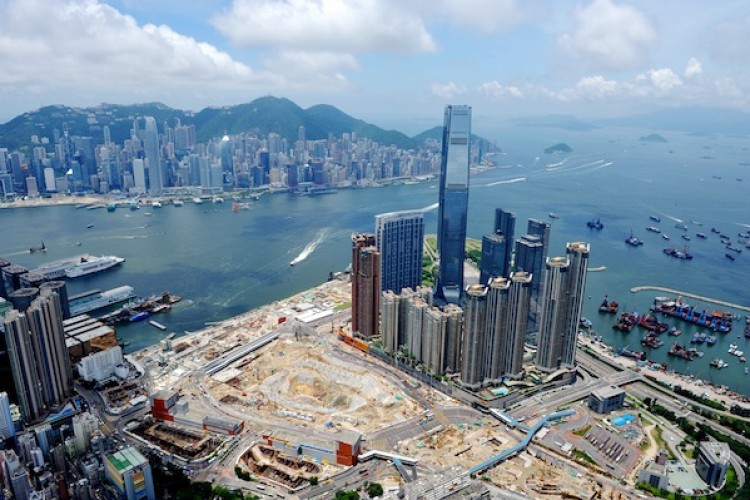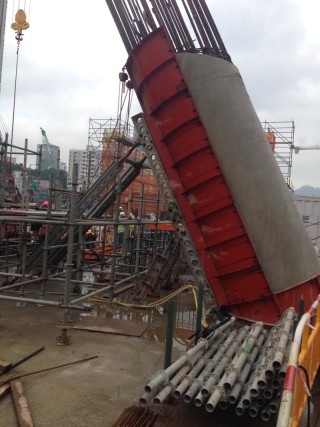The Hong Kong section of the Guangzhou-Shenzhen-Hong Kong express rail link (XRL) project forms an important part of China’s strategic national high-speed rail network. RMD Kwikform will be working on the Terminus’s iconic entrance building, which consists of a dramatic roof structure made up of three steel trusses, a huge sloping concrete beam and a concrete arch.
Rory O’Gara, senior project engineer for RMD Kwikform in Hong Kong said: “Having worked on previous projects in Hong Kong such as the new cruise terminal, we know that what the market expects are comprehensive, safe and efficient engineering solutions, no matter the size of the project. So, following detailed discussions with the Leighton – Gammon project engineers, we identified a number of potential obstacles that we would have to overcome, including the complex geometries of both the P1 Roof Beam and the Eastern Arch.”
The P1 concrete beam consists of six 4m-metre deep, sloping, cantilevering beams and eight bespoke ‘dragon’ shaped concrete sections spanning between each beam. At three locations along the length of the beam there are cast-in situ items where the steel roof connects. With minute allowable tolerances, meaning the design of the formwork and shoring had to be precisely engineered.
Rory O’Gara continued: “For the concrete beam, known as P1, it was apparent that we would need to use a combination of heavy duty, birdcage, proprietary and special items for this challenge.” RMD Kwikform designed and made a 17m-high heavy-duty working platform consisting of 600t of Megashor shoring, supporting bespoke and proprietary beams. “A tension-only bracing system built to Hong Kong wind codes also had to be incorporated into the solution. The platforms were designed to be pre-fabricated into 5.4m-high units, significantly reducing the need for working at height and giving safe operative access from the foundation level to within 3m of the cantilever beam.”
Due to the sloping nature of the cantilever beam, there would be considerable side loads entering the system. For this reason, rubber pads were used at the interface between the birdcage and the soffit, and the primary soffit beams were tied around the columns with steel rods.

Adrian Clamp, construction director of the Leighton Gammon JV said: “The Eastern Arch is another highly complex aspect of this project, where working closely with the RMD Kwikform engineers proved highly beneficial. It is a three-box culvert structure with its wall heights changing continuously. The base slope is also changing constantly across two planes and the base slab depth, wall thickness and top slab depth also change at regular intervals along its length. As part of the design we also needed the arch to be supported at three points by ‘K’ shaped circular columns that we needed RMD Kwikform to specially fabricate.”
The design of the Eastern Arch was made increasingly complex by the necessity to meet other project demands and maintain access routes around the site. This made the construction sequence unconventional as the Arch will remain three-quarters complete for over a year, meaning the shoring needs to remain in place.
O’Gara said: “Finalising the geometry of the arch was a process that required agreement from all parties involved in the construction programme. Representatives from the Leighton-Gammon Joint Venture, the MTR Corporation, BIM specialists InteliBuild and RMD Kwikform all worked together on finalising the design. It involved forming a 12m opening in the shoring using standard Megashor props and steal beams. The design for the special shutters for the K shaped circular columns also went through the same process. These units were then fabricated locally, before being delivered to site and erected using standard Superslim raking props to support them.”
Clamp said: “As one of the biggest construction projects ever undertaken in Hong Kong, this was always going to provide a number of interesting challenges. Working closely with RMD Kwikform engineers on several key aspects of the entrance building has helped us remain on schedule, to meet the tight construction deadlines.”
Got a story? Email news@theconstructionindex.co.uk




